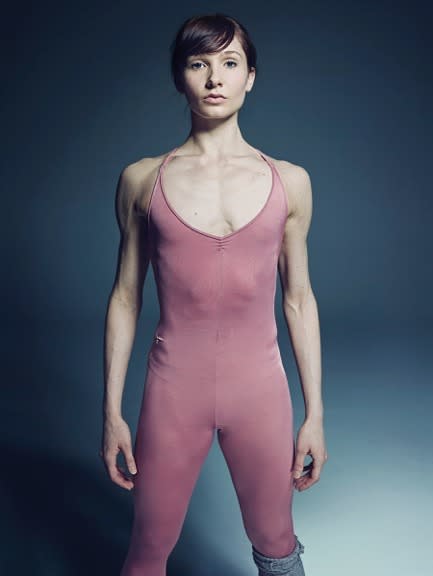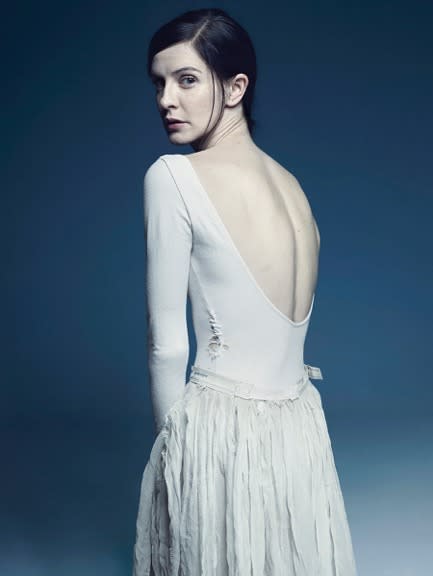Professional Ballet Dancers Are Beautiful Off-Stage, Too
Training for the chance to become a professional ballet dancer can take up to 10 years and 15 lessons per week, but somehow dancers make pirouettes and grand jetés on the stage look effortless, as if they all leapt out of the womb in leotards and pointe shoes. London-based photographer Rick Guest spent the past three years digging beyond the performance, photographing over a dozen top dancers like Tamara Rojo, artistic director of the English National Ballet, and Zenaida Yanowsky, principal of The Royal Ballet. The photographs, compiled in Guest’s second book, What Lies Beneath, will be on exhibit to the public from January 22 to January 31 at The Hospital Club in London. Unlike most professional photographs of ballet dancers, these individuals are shot in their daily practice gear — including worn-away leggings and cardigans — that serve more symbolic than functional purposes.
“When I first started photographing ballet dancers, it was very much the journal of a love affair,” Guest tells Yahoo Beauty. “Not only was I enthralled and beguiled by these amazing creatures, and their grace, poise, and physical prowess, but I wanted to communicate the joy that it was to be standing mere feet from them.” While ballet is well known for creating an illusion of effortless movement — dainty pointe shoes hiding callouses and broken toenails — Guest decided to “peak behind the curtain” to reveal how much physical and mental exertion goes into becoming a top dancer. “I think it does a great disservice to the dancers not to know what they go through to achieve this effortless appearance, and only lends a more profound appreciation of their art,” he explains. “It’s a little like the old line about the fact that Ginger Rogers could do everything Fred Astaire could, but backwards and in high heels!”
While American Ballet Theatre principal Misty Copeland is becoming well known in the United States, many talented ballet dancers at top companies are still anonymous to the general public. The backstage life of an elite ballet dancer, after all, isn’t as glamorous as it appears on-stage, from low wages to physical pain to long hours of practice that turn into late night performances. “It would be my hope that by projecting their art through a different prism, people who wouldn’t usually go to the ballet might be drawn in and cast under its spell,” Guest says. Take a sneak peak at some of the photos from the book and exhibition — with commentary from the photographer himself.
Related:
How Cuba Produces Some of the Best Ballet Dancers in the World
Misty Copeland Named First Black Principal Ballerina at American Ballet Theatre
Misty Copeland on Becoming One of the First Black Ballerinas to Dance ‘Swan Lake’








